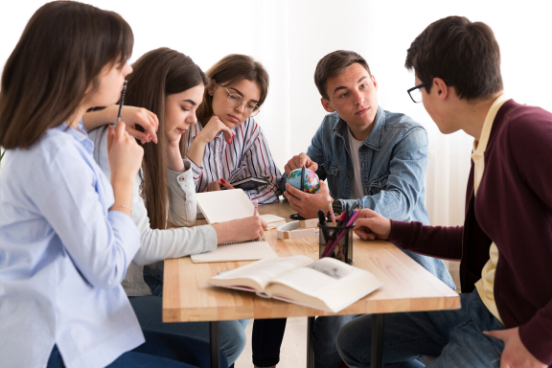Learning Options for Different Types of Learners
Learning has long been associated with formal education imparted at schools, colleges and universities. Acquiring sound education was aimed towards maximizing career prospects and earning potential.

However, each career interest continues to see a competitive rise and therefore demands the continuous need to learn in order to stay relevant. In light of this, there has been a massive flood of learning options from which to pick and choose to develop skills needed throughout life.
On the other hand, many people avoid the idea learning because it has traditionally been equated with reading and not everyone enjoys reading. Rather, some prefer seeing, listening or both as methods to learn. It is only recently that these formats have become easier and more practical to access.
Most people don’t even know that there are different learning options, each of which offers formats that appeal to different types of learners.
Learning styles differ from person to person
It’s interesting to note that each learning style uses different areas of the brain. An individual’s preferred learning style will therefore guide the way they internally represent experiences. And further still, an individual’s style may morph over time and across situations.
There are roughly seven learning styles. Recognizing your dominant type will help improve your speed and quality of learning.
1. Aural (auditory-musical): These learners best retain information through sound or speech, even music, rhymes and rhythms. They prefer classroom lectures, webinars, audio podcasts and online learning over reading.
2. Visual (spatial): These learners are comfortable using spatial understanding, pictures, colors, graphs and images. They notice minute changes in their surroundings and are good with balance and alignment. Therefore, they would best learn from webinars, video tutorials, audio or video podcasts, and other online options.

3. Verbal (linguistic): Verbal or linguistic learners are able to digest large amounts of information by reading materials and are seen noting down points. This is what helps them retain and absorb information.
They prefer recordings of classroom lectures, in-person workshops, online learning sessions, audio podcasts, and reading material like books and e-books as well.

4. Logical (mathematical): These types of learners are able to precisely observe the ‘why’ and ‘how’ of a situation. They can see how things are interconnected and understand complex patterns, math problems and strategy, for example, chess. They don’t entertain open-ended questions and assignments unless these come with statistical and graphical representations.
So whichever learning method they choose, be it online, a classroom lecture, or even an audio or video podcast; it should include measurements and statistical data to help them process the knowledge provided. For instance, while understanding the classification of musical instrumentations, the mathematical relationship between musical notes would make help this learner make sense of the information. Another example would be explaining the meter i.e. stressed and unstressed syllabic pattern within the lines of a poem.
5. Physical (kinesthetic): Physical learners prefer to discover and build knowledge through hands-on experience. They are distracted when they are exposed to learning frameworks that do not offer practical training.
Kinesthetic learners prefer learning through lectures – online, offline, and activity-oriented workshops – but with some conditions. Include letters and numbers with movements, and even songs to help them to learn as they move. Engaging such learners with role play, props and models will help them process more information. Even letting them take short intermittent breaks to move around or fidget with a pen or shake their legs while sitting would be a strategy to help them learn.

6. Solitary (intrapersonal): Solitary learners value independent learning in quiet settings. They prefer to work through problems alone and respond better to taking notes in journals and writing assignments. Group discussions are not their strongest suit. So, these types of learners would be comfortable studying through online courses, podcasts, and webinars.
7. Social (interpersonal): Social learners have excellent communication skills because they thrive in group projects and social settings. They can learn best in environments that favor presentations, group projects and discussions. Therefore, they prefer classroom lectures and group discussions where they can express themselves while absorbing all information and asking clarifying questions.

So, where do you want to go?
These different styles of learning prove to be an assortment of interconnected variations. We could, therefore, summarize them by comparing how each type of learner would follow directions by car to reach a place they’d be visiting for the first time. Here goes…
The auditory learner would prefer GPS instructions played on aspeaker in the car while the visual learner would trace their destination looking at the digital map. More so, the verbal learner would prefer both, the instructions and the roadmap, all the while noting everything on a piece of paper before pressing the accelerator.
Then comes along the logical learner who, the day before a trip, would sit with a cup of coffee and study the roadmap to mark the miles to be covered, calculate the approximate travel time and schedule activities along the route. The kinesthetic or physical learner, while taking GPS instructions, will be found rolling down the window to ask for directions. Don’t be surprised if you find them doing a test drive to their target destination a few days in advance, just to be sure.
The solitary learner after noting down directions in a quiet room will come back with multi-directional insights from Google image maps and YouTube instructional videos. Finally, the social learner will arrange for a WhatsApp conference call with a bunch of friends, understand the possible routes and then round up everyone for a road trip. She might also share live location while traveling the route, just so those who missed out could be part of the fun.
 Photo by Element5 Digital and rawpixel.com from Pexels
Photo by Element5 Digital and rawpixel.com from Pexels
Learning is a lifelong experience and is the cumulative effort of hard work and then using the right method for absorbing knowledge. What are your favorite methods of learning? Would you change how you learned in school or college? Let us know in the comment section.